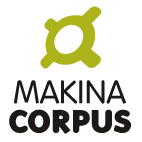Paperclip
Add attachments to Django models, used in MapEntity.
INSTALL
Installing from pypi (using pip)
pip install paperclip
Installing from github
pip install -e git://github.com/makinacorpus/django-paperclip.git#egg=django-paperclip
UPGRADE
After upgrade to 0.4.0, if you want to enable links to Youtube/Soundcloud media, you have to add an additional column to the database:
ALTER TABLE paperclip_attachment ADD COLUMN attachment_video VARCHAR(200) NOT NULL DEFAULT '';
BASIC USAGE
- Add
easy_thumbnails,embed_videoandpapercliptoINSTALLED_APPS - Include urls
urlpatterns = [
...
url(r'^paperclip/', include('paperclip.urls')),
...
]
- Include scripts in template
<script src="{% static "paperclip/bootstrap-confirm.js" %}" type="text/javascript"></script>
<script src="{% static "paperclip/spin.min.js" %}" type="text/javascript"></script>
<script src="{% static "paperclip/paperclip.js" %}" type="text/javascript"></script>
If you use bootstrap 3 or bootstrap 4, please include paperclip/bootstrap-3-confirm.js or paperclip/bootstrap-4-confirm.js instead of paperclip/bootstrap-confirm.js.
- Include list and form in template
{% include 'paperclip/attachment_list.html' with object=my_instance attachment_form_next=my_instance.get_detail_url %}
- Add paperclip models in one of your apps
class FileType(paperclip.models.FileType):
pass
class Attachment(paperclip.models.Attachment):
pass
- Configure
Define the following django setting:
PAPERCLIP_ENABLE_VIDEO = False, PAPERCLIP_FILETYPE_MODEL = 'myapp.FileType' PAPERCLIP_LICENSE_MODEL = 'myapp.License' PAPERCLIP_ATTACHMENT_MODEL = 'myapp.Attachment' PAPERCLIP_ACTION_HISTORY_ENABLED = True
- Make migration and migrate
TEMPLATES
Three templates are embeded and can easily be overriden :
-
paperclip/attachment_list.html: renders a table displaying attached files for an object and an upload form using the two following templates -
paperclip/_attachment_table.html: renders a table displaying attached files for an object. You can add extra columns usingblock extra_column_headerandblock extra_column_data -
paperclip/_attachment_form.html: renders an upload form
TEMPLATETAGS
Two templatetags are provided :
get_attachments_for
Resolves attachments that are attached to a given object. You can specify the variable name in the context the attachments are stored using the as argument. Default context variable name is attachments. You can filter on a specified FileType with the optional only_type argument.
Examples
{% get_attachments_for my_instance as "my_attachments" %}
{% get_attachments_for my_instance as "my_attachments" only_type my_filetype_instance %}
attachment_form
Renders a "upload attachment" form. obj argument is required and represents the instance to which you want to associate the file. A bound form can be given optionnaly with the argument form. Important : a attachment_form_next variable is expected in context. If you want to use a custom form class, you can add attachment_form_class variable in context too
Examples
{% with object=my_instance attachment_form_next=my_instance.get_detail_url %}
{% attachment_form object %}
{% endwith %}
OR
# views.py
...
context['object'] = my_instance
context['attachment_form_next'] = my_instance.get_detail_url(=)
context['attachment_form_class'] = MyAttachmentForm
...
# template
{% attachment_form object %}
USE A CUSTOM FORM
You can use a custom django form by following this steps. Parenthetically, It's the recommended solution if you want to use django-crispy-forms or django-floppyforms.
- Write your custom form :
from paperclip.forms import AttachmentForm
class MyAttachmentForm(AttachmentForm):
...
Note: To be sure to not break the form logic, we recommend to inherit from the native paperclip.forms.AttachmentForm.
- Add your form class in a
attachment_form_classvariable of the main view context
context['attachment_form_class'] = MyAttachmentForm
- Override
'add_attachment'and'update_attachment'URLs to provide your custom form class in arguments
from my_app.forms import MyAttachmentForm
urlpatterns = [
path('paperclip/', include('paperclip.urls')),
...
path('add-for/<str:app_label>/<str:model_name>/<int:pk>/',
'paperclip.views.add_attachment',
kwargs={'attachment_form': MyAttachmentForm},
name="add_attachment"),
path('update/<int:attachment_pk>/',
'paperclip.views.update_attachment',
kwargs={'attachment_form': MyAttachmentForm},
name="update_attachment"),
...
]Note: Be sure to write these URLs after having included paperclip URLs.
CLEANUP
Deleting or changing an attachment does not remove the old attached file from disk. From time to time you can clean obsolete files by running:
./manage.py clean_attachments
AUTHORS
LICENSE
- LGPL



